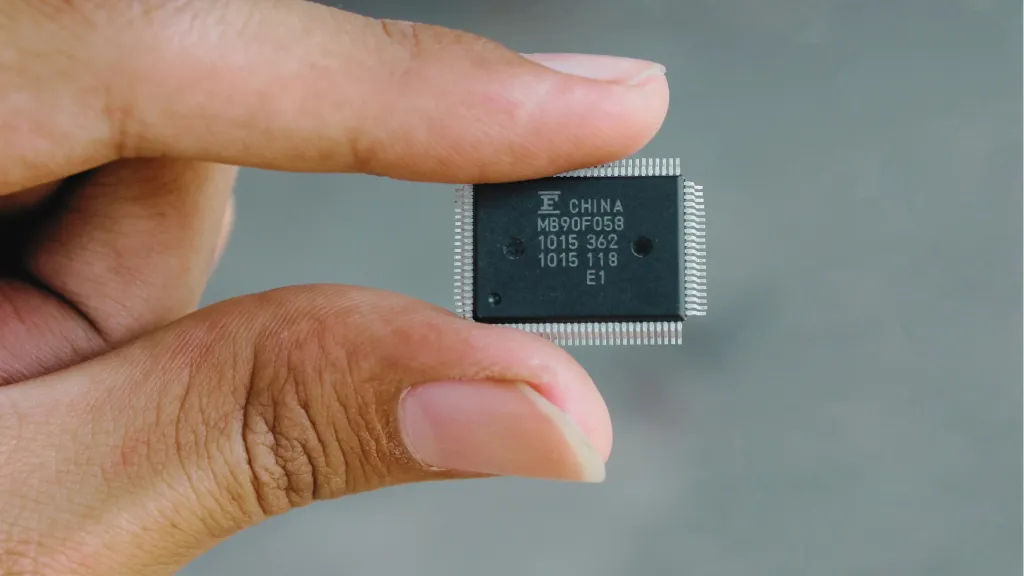Monitor refresh rates are one of the most confusing aspects for consumers when buying a new monitor. So many features can affect your decision, such as resolution and size.
But what is the actual difference between 75Hz and 144Hz? Which should you buy?
This blog post will compare these two monitors’ functionality, price, and popularity.
Factors to Consider When Buying a New Monitor
The bottom line is that there are many factors to consider when buying a new monitor. Which one you choose will depend on your budget, what size screen you want, and whether or not the difference between 75hz and 144hz matters for you.
The only way to determine which panel type best suits your needs is to try them out yourself.
What is a Refresh Rate?
Most people are unaware of what a monitor’s refresh rate means, or how it can affect their computing experience. A monitor’s refresh rate refers to the number of times its display updates per second.
Monitor refresh rates are the speed at which your monitor sends data from its memory back to the screen, measured in Hertz (Hz). It’s important because if it’s too low, every frame will take two refreshes to display on the screen.
It will take approximately 60 frames per second for a game to seem smooth and playable, which can be frustrating if your frame rate is capped at 30fps!
If you have a 60Hz monitor, your screen will update 60 times per second. With a 120Hz monitor, your screen will update 120 times per second. The higher your refresh rate, the smoother and more fluid animations appear on-screen.
This effect is most noticeable when playing games with large numbers of moving objects at once – such as in first-person shooters like Call of Duty: Ghosts or Battlefield 4 – or watching videos with fast camera movements (e.g., a chase scene from The Matrix).
75Hz vs 144Hz Comparison Table
| Feature | 75Hz Monitor | 144Hz Monitor |
|---|---|---|
| Refresh Rate | 75 times per second | 144 times per second |
| Smoothness | Provides smoother scrolling and panning | Provides smoother gameplay and fast response times |
| Motion Blur | May have more motion blur at higher refresh rates | Less motion blur and quicker response time |
| Gaming | Good for gaming with lower frame rates | Ideal for competitive gaming and fast-paced games |
| Text Clarity | Crisper text without motion blur | Displays fast-moving text without blurring |
| Price Range | $100-$300 | $200-$400 |
| Flickering | May have flickering issues above 85Hz | Improved technology reduces ghosting, but some displays may still have the issue |
| Use Cases | Basic tasks, gaming, and movies | Gaming, videos, fast-moving content, competitive gaming |
What is the Difference Between 75Hz and 144Hz Monitors?
Regarding gaming monitors, the main difference between a 144Hz and a high-end 75Hz monitor is the refresh rate. A 144Hz monitor refreshes its screen 144 times per second, while a 75Hz monitor refreshes it 75 times per second. As a result, gameplay should appear smoother on a 144Hz monitor, although the difference between a 144Hz and 60Hz monitor is more noticeable.
Another factor to consider when comparing these two types of monitors is the frames per second (FPS). On a 60Hz monitor, a 60fps video may look choppy, but it will appear smoother on a 120Hz or higher monitor.
What is a 75Hz Monitor?
A 75Hz monitor refreshes the screen at 75 times per second. This may not seem like much, but it’s an improvement from 60Hz monitors. These monitors are great for gaming and movies because they offer smoother images when scrolling or panning across the screen.
These are perfect if you’re looking for something that offers more fluid animation without breaking your budget!
The 75Hz monitors are best for gamers who, due to monitor size or GPU capabilities, cannot achieve the maximum framerate that a 144Hz monitor would be able to produce.
In other words, if you can’t maintain 75 frames per second on your current gaming rig at 1080p and still want an upgrade in response time from 60 Hz monitors (or below), then the 75 Hz monitor is for you.
What are the Benefits of a 75Hz Monitor?
One of the benefits of a 75Hz monitor is that it provides smoother scrolling and panning. Without this smoothness, you’ll find that 60Hz monitors cause more motion blur than what you would see on normal TV shows and movies. This makes the screen less entertaining to watch.
A 75Hz monitor also offers crisper text without any motion blur, which is great for people who need a clearer picture when reading text. The only thing to consider with these monitors is that they’re not very good for gaming because there is a small chance that they can flicker.
Flicker isn’t generally an issue for most monitors, but it becomes more likely above 85Hz refresh rates. Some people don’t notice this flickering effect, but for those who do notice it, then a lower-end monitor is the best option.
A 75Hz monitor is great for people looking for a smooth experience when scrolling across the screen. They’re also good for gaming and movies because they provide smoother images.
However, there are some drawbacks to this type of monitor. For instance, people may see the flicker on screens with refresh rates above 85Hz, which can be distracting.
What is the Cost of a 75Hz Monitor?
Sceptre 20″ 1600×900 75Hz Ultra Thin LED Monitor

The price range on the 75Hz monitor is usually $100-300, whereas its counterpart can cost upwards of $700+, making it more affordable. The 75Hz monitor is good for anyone with a low budget or who does not need the smoothest possible animation.
What is a 144Hz Monitor?
A 144Hz monitor is a newer technology that has been released in more recent years. It provides a faster response time to images shown on the screen. This makes it ideal for gamers who play competitively and need a monitor that shows the most up-to-date information on the screen possible.
A 144Hz screen refreshes the image twice as often, which means it has less motion blur and quicker response time. This makes gaming or watching movies much more realistic for people who want faster response times without sacrificing fluid animation.
These monitors are also great at displaying fast-moving text without any blurring, which is perfect for those who want to use their monitor in an office where they need to read emails or documents quickly and accurately.
Many people prefer to play games on monitors with higher refresh rates and faster response time, so this is another bias for gamers in deciding which type of monitor they want.
What are the Benefits of a 144Hz Monitor?
Some might think that 144hz monitors are just a marketing ploy, but they’re not. These high refresh rates provide smoother gameplay and make it easier to spot enemies in first-person shooters or react faster in racing games.
The higher refresh rate of a 144Hz monitor makes it more suitable for gaming and videos or anything that requires fast movement, such as racing games.
However, this faster refresh rate can also result in “ghosting,” which causes moving objects to appear behind static objects when they are both on-screen simultaneously. Ghosting has become less common in recent years as manufacturers have improved their technology to reduce its effects but it remains an issue with some displays and models.
What is the Cost of a 144Hz Monitor?
Dell S2421HGF 24 Inch FHD TN, Anti-Glare 144Hz Gaming Monitor

The average price of 144Hz monitors (out-of-box) is more expensive than their counterparts, the 75Hz monitors. This can be attributed to higher quality parts in these models, such as better and faster response times from a TN or IPS panel.
In addition, 144Hz monitors also include higher-bandwidth connections such as DisplayPort or HDMI.
The 144Hz monitor usually costs between $200-$400. They provide a seamless gaming experience by displaying content at 144 frames per second instead of 60 FPS on a standard screen (60 Hz).
Which is Better? 75Hz or 144Hz
A 75Hz or a 144Hz monitor will depend on your budget, what you need it for, and how much time you spend doing various tasks with your computer, such as gaming or surfing the web.
If you’re using your monitor for basic tasks, 75Hz is fine. But if you’re using your computer to watch movies or play video games, it’s better to get the 144Hz.
Frequently Asked Questions
Is 75Hz Good For Gaming?
Yes, a higher refresh rate makes for a smoother gaming experience. Even though 75Hz is not as high as some of the latest gaming monitors, it is still significantly improved over 60Hz. In addition, 75Hz monitors tend to have lower input lag than 60Hz monitors, another advantage for gamers.
So if you’re looking for a monitor that will give you a better gaming experience, a 75Hz monitor is a great choice.
Is 144Hz Good For Gaming?
If you’re looking for a competitive edge in your favorite games, a 144Hz gaming monitor is worth the investment. Not only do you get a more responsive and enjoyable gaming experience, but you also gain an advantage over your opponents who are still using 60Hz displays.
144Hz monitors provide smoother and more accurate image rendering, making it easier to track fast-moving targets. In addition, the reduced input lag allows you to react faster to in-game events.
As a result, 144Hz monitors are becoming increasingly popular among gamers who are serious about winning. If you want to take your gaming to the next level, a 144Hz monitor is worth considering.
Conclusion
When choosing a gaming monitor, there are several factors to consider, such as screen size, resolution, and refresh rate. Among these, refresh rate is especially important for gamers.
Generally, a higher refresh rate means a smoother gaming experience. A 144Hz monitor is considered the better option for gaming, as it provides a high refresh rate that can make games feel more fluid and responsive. Additionally, a 144Hz monitor can also improve productivity when working with graphics or videos.
For gamers seeking the most immersive and responsive experience, a 144Hz monitor is likely the better choice.






